I awoke early, surprisingly refreshed despite of the chill night air of Koya-san and unusual new room. I sat next to the window overlooking the garden and wished that I had more time to spend in Shojoshin-in. It was with some excitement that I dressed and went to the temple proper for the morning prayers.
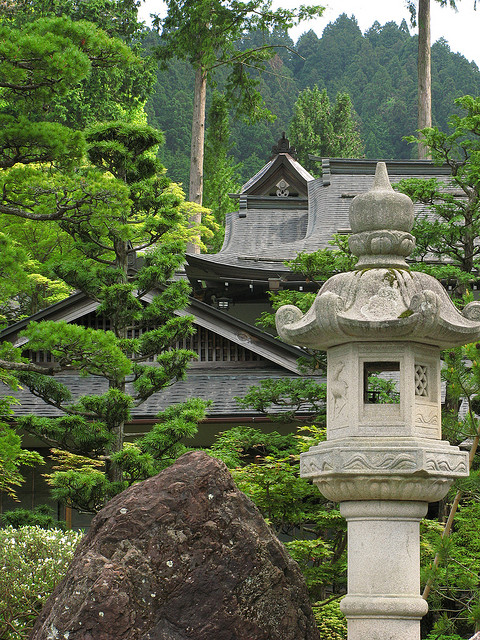
Shojoshin-in temple best stay in Japan! (photo: thisyearsboy/flickr)
The gold and brocade of the altar glittered in the subdued light of the dark room. The smell of incense was heavy in the air. Guests had a choice of tatami matting or a wooden bench to sit on, and I felt conspicuous being the only one on the floor, so opted for the bench with the other six or seven other guests huddled together looking a bit nervous and ill at ease about what to do or where to go. The morning chill was only slightly relieved by the space heater at one end of the bench.
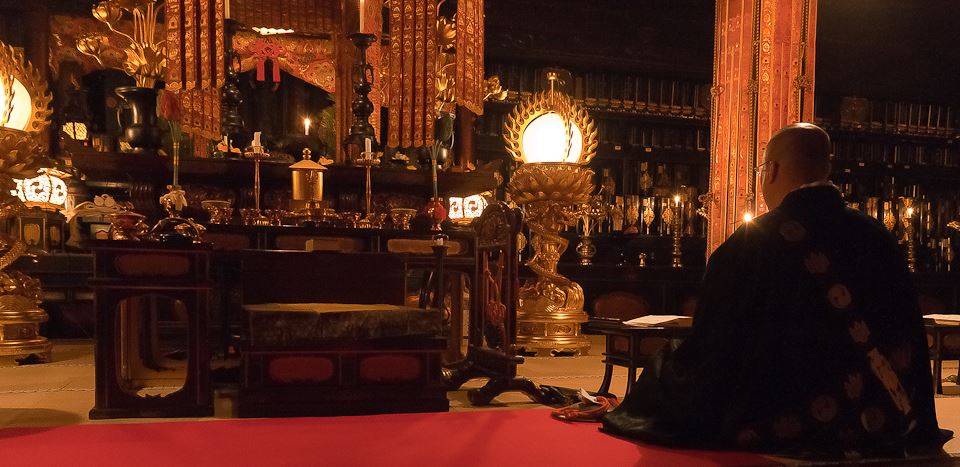
shojoshin-in morning prayer
Presently a priest entered and sat down in front facing the altar, and a few others joined sitting on either side of him. They began chanting, occasionally ringing a gong or bowing, and I listened and watched. I can’t say I concentrated on the whole service, but my thoughts drifted in and out. I felt at peace with the world and relaxed with myself, and the time seemed to drag on for hours but also seemed to fly past; I was tranquilly distant and yet aware of small details. At the end, the priests invited the guests to go to the altar for a personal prayer, and I took my turn, but the special part for me was the rhythmic chanting.
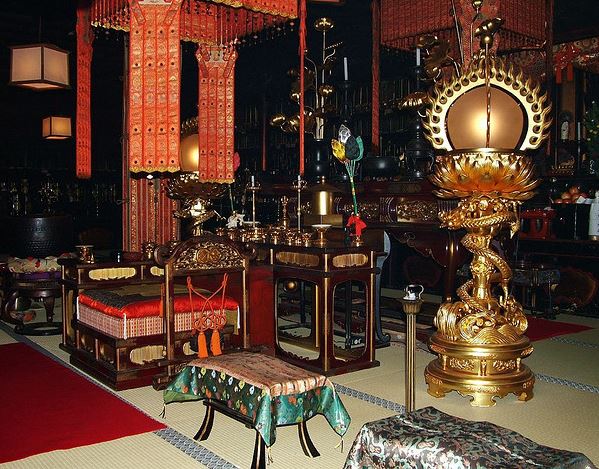
shojoshin-in morning prayers
After the service, the priest explained something in Japanese. I have no idea what he was talking about, but the other guests nodded and smiled and looked serious in turns. He apologized to me that his English was not good enough, but said that it was a welcome to Koya-san and a thanks for joining the service, though that was about the briefest summary I could imagine for the ten minutes of discussion with the others. But somehow I didn’t mind. I just enjoyed listening to his soft and melodious voice.
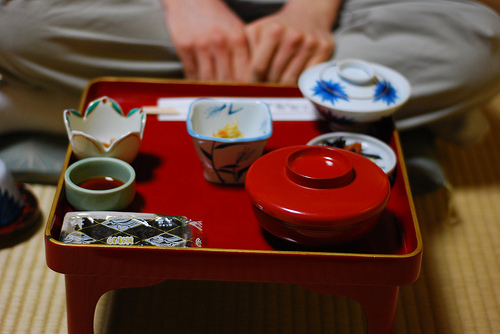
Shojin-ryori Breakfast (Photo credit: weirdo513)
After the prayers and discussion were over, it was time for a Shojoshin-in breakfast. Again, the food was unbelievably delicious. It was also exceptionally large for a breakfast in my opinion, since I am used to a pastry with coffee. Instead there was an array of small plates with pickles, grilled vegetables, and more of the delicious tofu. As before, there was a big tub of rice.
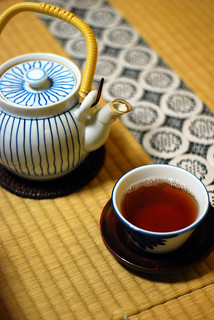
Shojin-ryori Breakfast (Photo credit: weirdo513)
The other guests sat together at a table on the other side of the room, talking in low voices in Japanese and occasionally glancing my way. I ate in silence and returned to my room to gather my few belongings to check out.
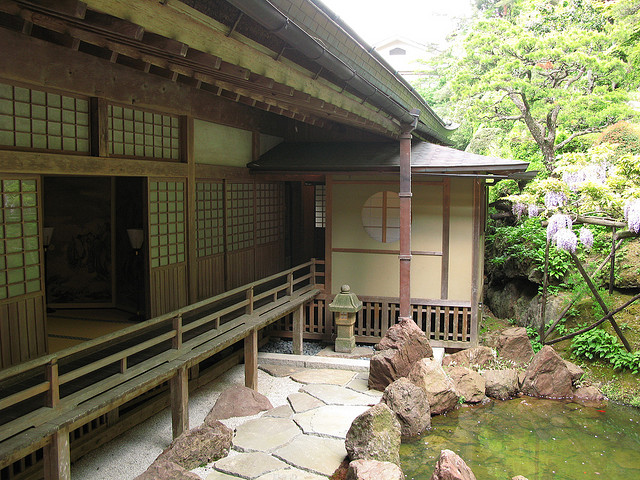
Shojoshin-in temple and rooms (photo: thisyearsboy/flickr)
The monk at the desk was very polite and thanked me for coming, and wished me well on my journey. I thanked him and left through the gate, suddenly feeling like I was being thrown back into the rush of the everyday world. But I still had almost a full day in Koya-san before I needed to return to Osaka, and I planned to enjoy it.
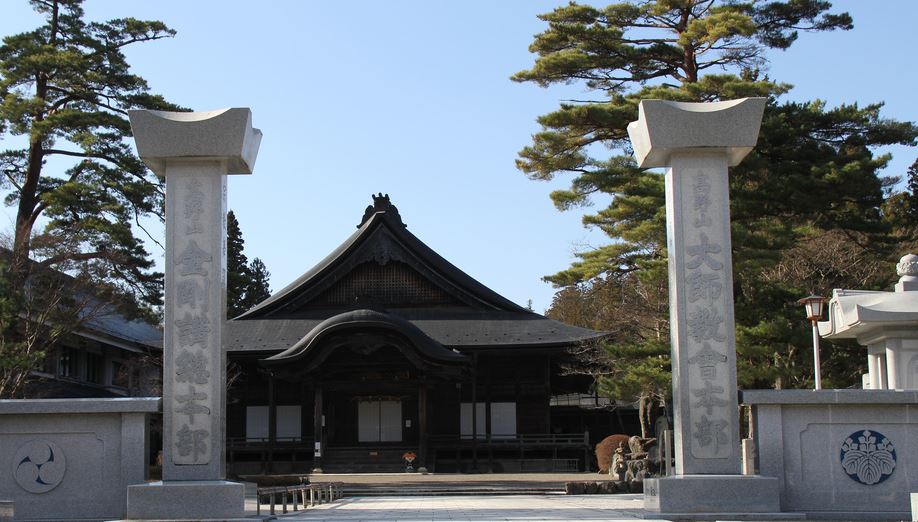
Daishi Kyokai Center
One of the things I had heard about was shakyo, or the process of writing a Buddhist prayer. It was said to be a virtuous deed and an excellent form of meditation, so I thought it would be interesting to experience for myself. It was not hard to find the Daishi Kyokai Center 高野山大師教会本部 and arrange for my lesson. Even though the English instruction was minimal, it was easy enough to see what I was supposed to do. I was given a brush and ink, and a page with a decorated border that fit over a text to be copied. The teacher first demonstrated how to hold the brush and make marks with the ink, and I tried my hand at it on a separate paper. It wasn’t as easy as it looked, but the teacher nodded and indicated that I start on the real prayer.
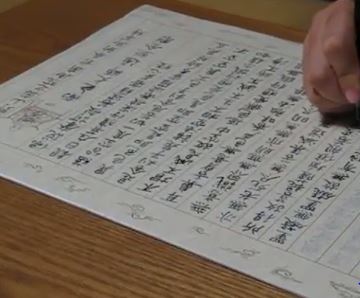
Koyasan Heart Sutra
I did my best to copy all the marks the way they were written on the template. However, it was obvious that there were deviations in my version. I kept at it and the letters got less wobbly. It took almost an hour, much longer than I expected to write such a short piece. But at last my prayer was complete and the teacher came back over to my side. We removed my decorated page from the template. Without the original beneath it to show where my errors were, the page looked much better. After confirming that it was dry, we put it in an envelope and I was free to roam the town. I plan to frame it when I get home and put it above my computer; I hope by looking at it, I can recall the peace of being at Shojoshin-in.
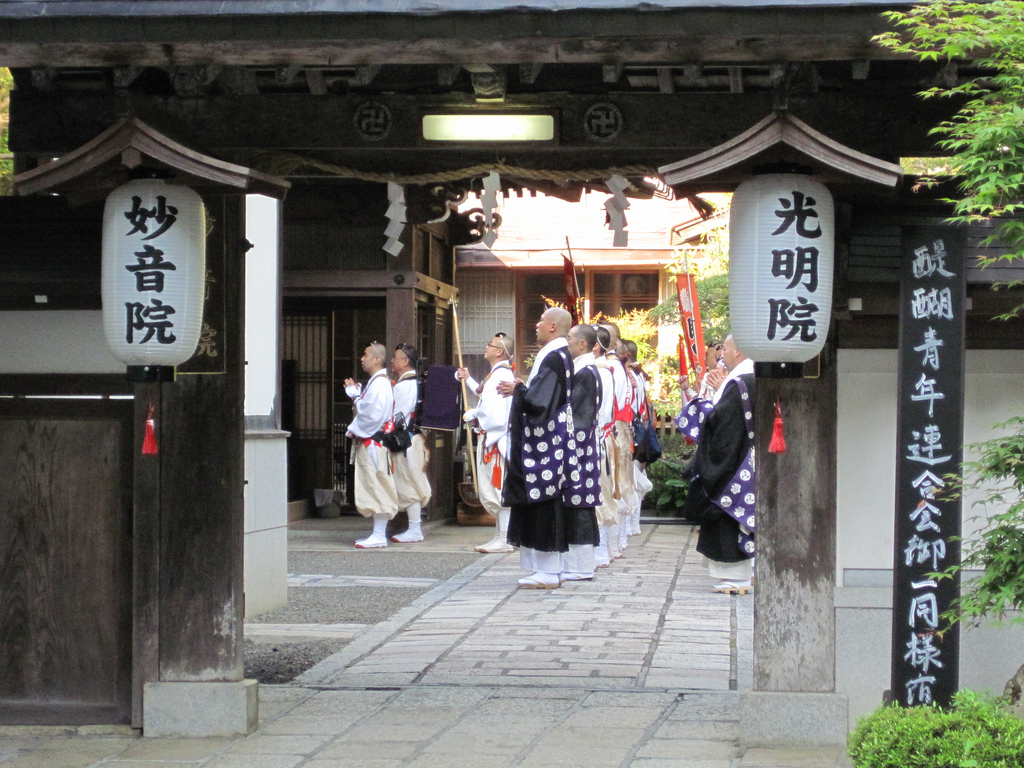
Mt. Koya Monks
From the Daishi Kyokai Center, I wandered through the town of Koya, marveling at the souvenir shops. They didn’t have postcards and plastic trinkets; instead, they were full of prayer beads, amulets, books of sutras, and other religious items. There was also tofu in nice packages, which seemed rather out of place as well, even though I knew the town was famous for it.
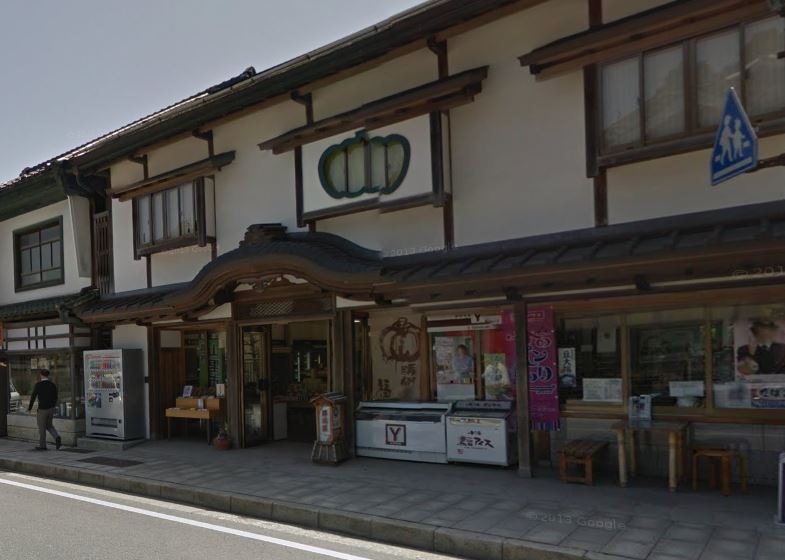
Koya Town shops
Throughout the town, monks in brightly colored vestments flitted like butterflies among the visitors, who all seemed to be dressed in drab browns, black, and dark blues. It seemed so odd to see a monk standing next to a vending machine or walking down the street with a plastic grocery bag on his arm, but it also made me realize that the monks are people with lives outside of their prayers in the temples, too.
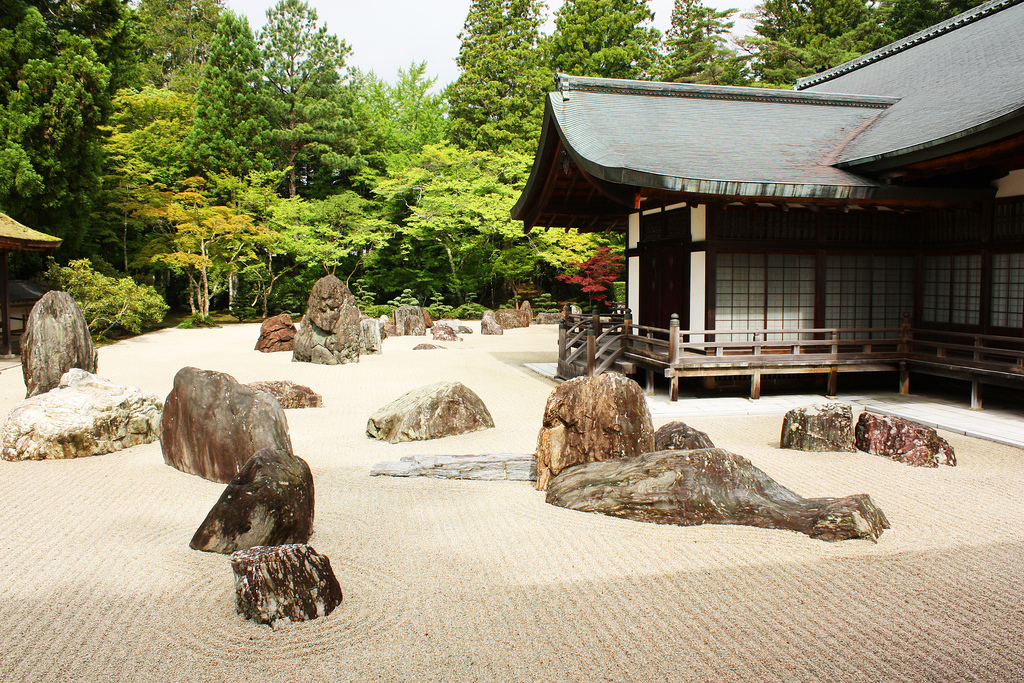
Banryu-tei rock garden, Kongobu-ji
My goal today was the Danjo Garan, a complex of buildings that included Kongobu-ji, the head temple of the Koyasan Shingon sect in Koya-san. Though the building was only about 100 years old, the sliding screens inside were painted centuries ago. They were rather faded in places, but still retained the vigor and richness that made them so famous.
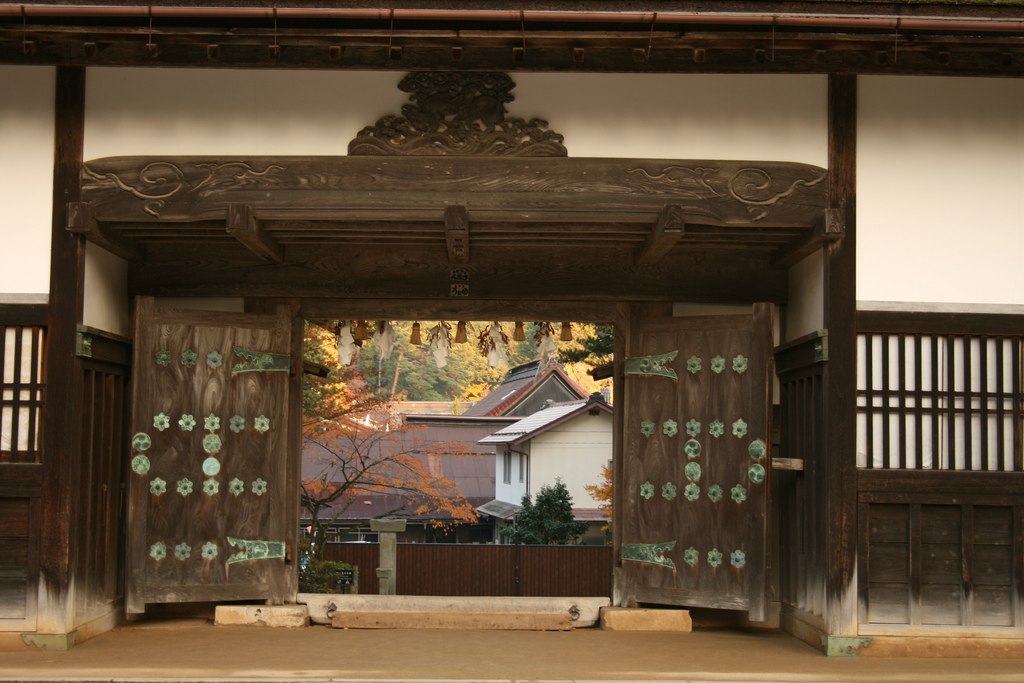
Koyasan
Kongobu-ji also had a rock garden, the largest in Japan, but I was not was impressed with that as with the paintings. I think the sheer size was impressive, but also what made it less interesting for me. I prefer things which are a bit more subtle and understated.
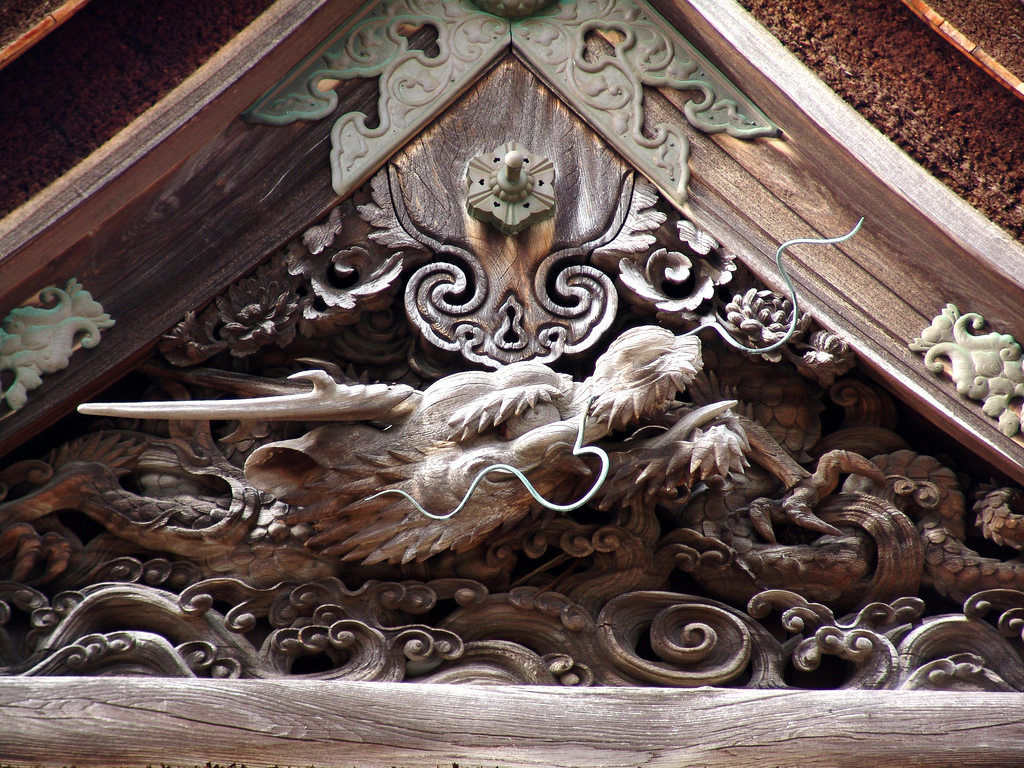
Kongobu-ji
After Kongobu-ji, I walked around the Konpon Daito, a two-story pagoda. It did not seem very impressive after some of the ones I have seen in Kyoto, but supposedly it is the center of a three-dimensional mandala, which makes it very special and powerful.
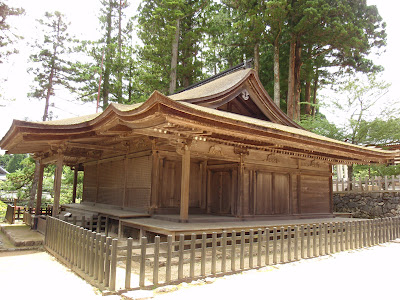
Koyasan – Danjo Garan – Fudo- do
My attention was caught by the Fudo-do, a small building set to the side. It had elegant lines that were quite a contrast to much of the heavy religious architecture in the area. The main deity inside was Fudo, the god of retribution, and his fierce statue seemed at odds with the gentle shape of the building. Only later did I find out that the place was designed by a woman, and I attributed the graceful shape to the woman’s sensibilities. It was very lovely.
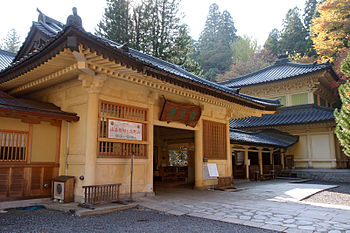
English: Reihokan on Mount Kōya in Koya, Wakayama prefecture, Japan. 日本語: 高野山の霊宝館, 和歌山県高野町 (Photo credit: Wikipedia)
I also stopped at the Reiho-kan, or treasure house. It was packed with statues and other artworks relating to Buddhism. Many of them were centuries old and national treasures. Things were well displayed, though there could have been more English explanations. I found myself wandering from one to the next, wondering how they had survived through the years, and why these were considered so precious, when there must have been hundreds of artworks lost for each one that was preserved here.
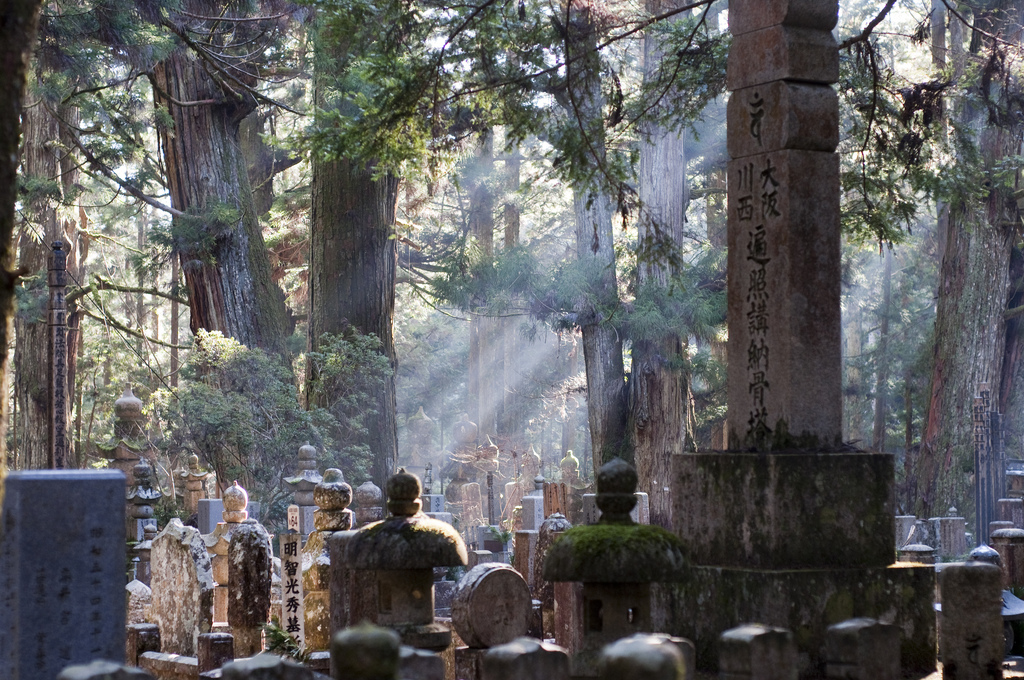
Kongobu-ji serenity
At last I was back outside in the cool autumn sunshine of Koyasan. There were other places to see in the town, but I was running out of time. Instead of rushing through more, I decided to walk back to the cable car instead of taking the bus. I stopped at a café for a late lunch before boarding the cable car for the descent back to the train that would take me to Osaka. I had the sensation that we were floating down from the clouds, swimming on a sea of evergreen and fiery maples. The train became increasingly crowded as we approached Osaka, but I still felt bathed in the magic and peace of Koya-san like I was in the late afternoon sunlight.
You can request availability at the enchanting Shojoshin-in at the following link: JapaneseGuestHouses.com.
